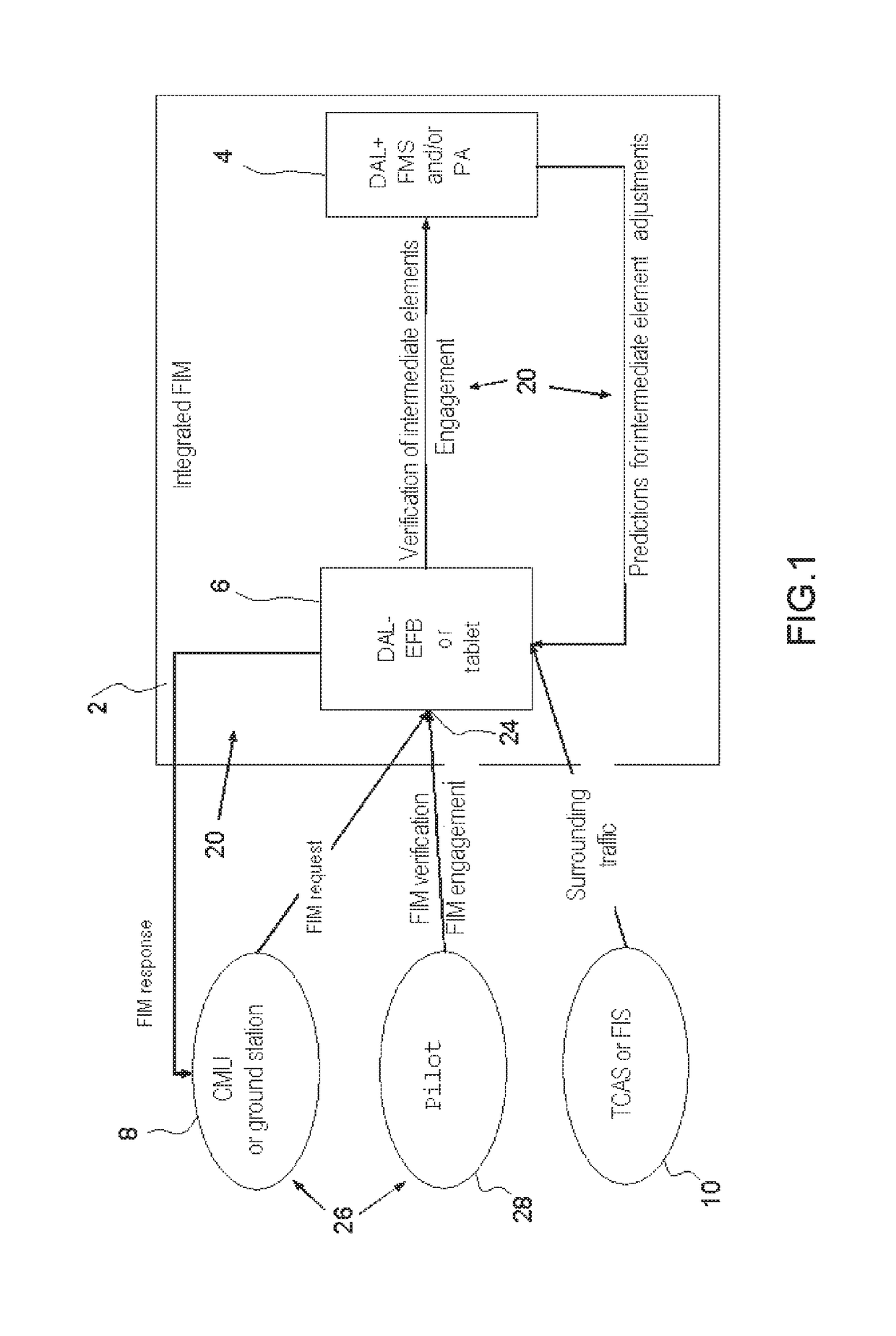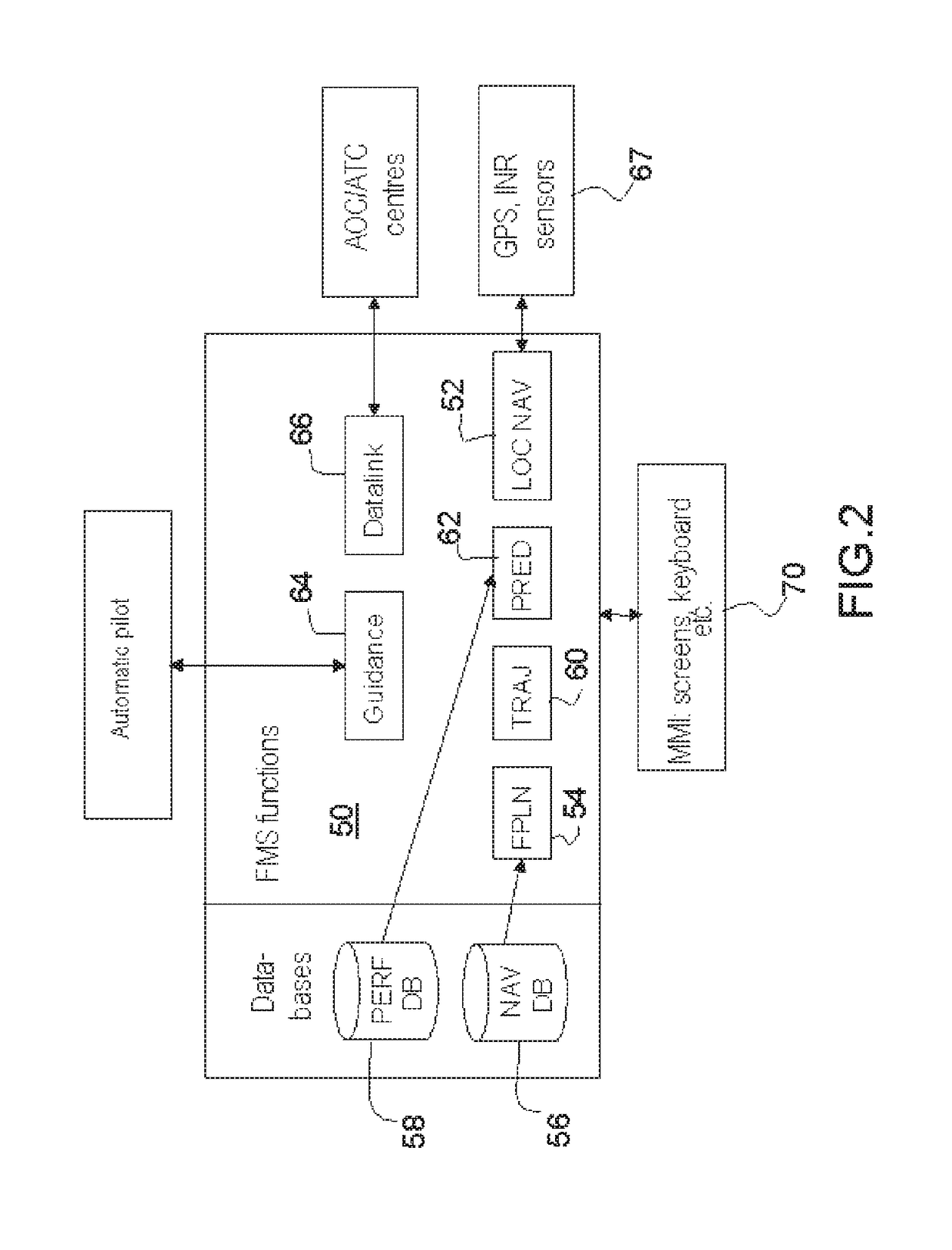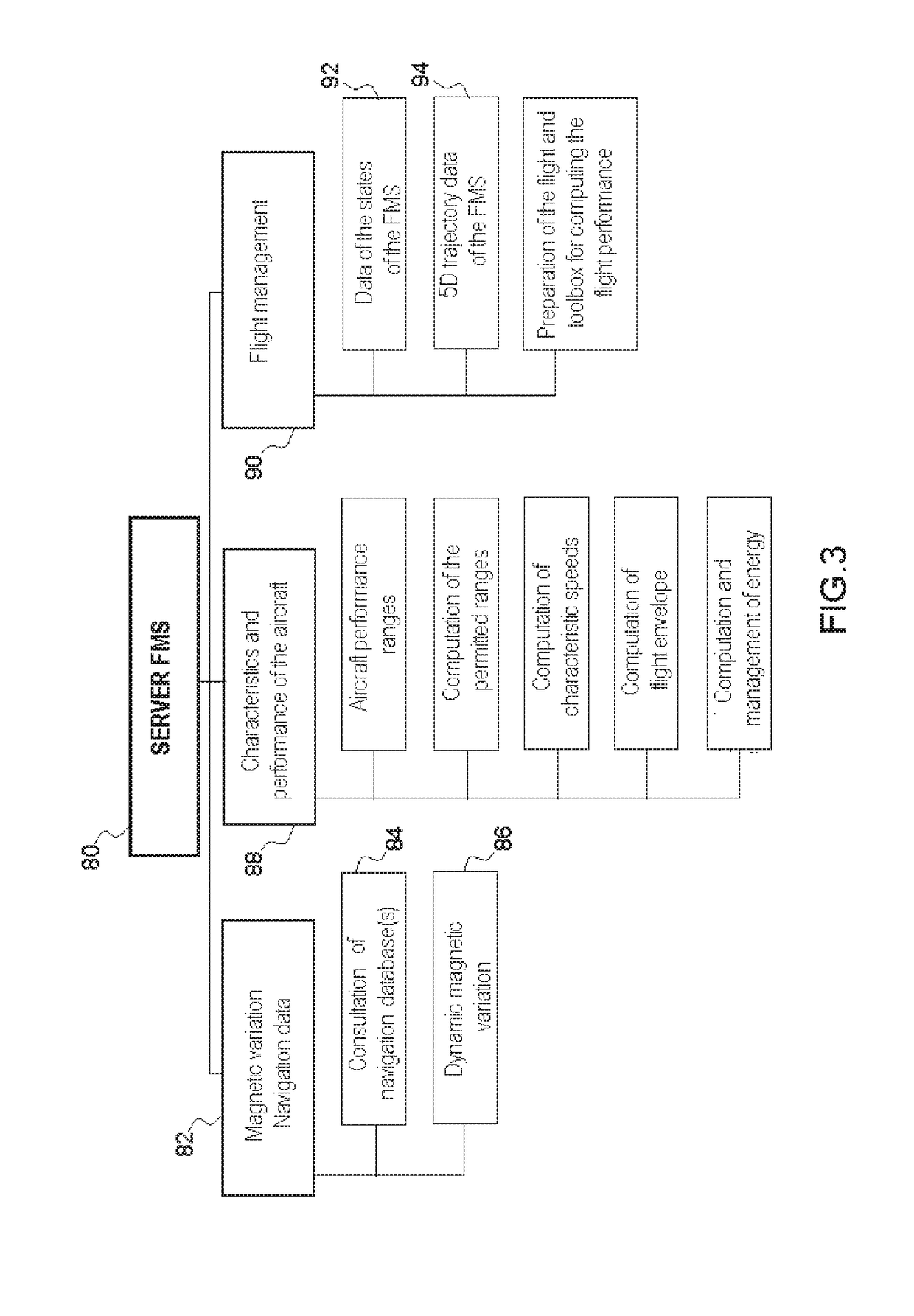Method for integrating a new service into an avionics onboard system with open architecture of client-server type, in particular for an FIM manoeuvre service
a technology of avionics and client-server type, applied in the field of integrating a new navigation service or application into an avionics onboard system with open architecture of client-server type, onboard system, can solve the problems of increasing the requirements, increasing the complexity of the algorithm and its degree of validation, and giving rise to a development cost that is ten to a hundred times greater than it would be in a level d hardware environment, so as to minimize communication exchange, reduce the cost of respons
- Summary
- Abstract
- Description
- Claims
- Application Information
AI Technical Summary
Benefits of technology
Problems solved by technology
Method used
Image
Examples
Embodiment Construction
[0094]According to FIG. 1, an onboard navigation system 2 comprises at least two computers, namely a digital navigation core computer 4 and at least one peripheral computer, here three computers 6, 8, 10, and a communication network 20 linking the digital core computer 4 and the peripherals 6, 8, 10, the said communications network 20 being represented only in a functional manner in FIG. 1.
[0095]Computer is understood to mean a hardware and software computation chain. A computer can consist of several housings and / or hardware boards and / or of several software partitions. The redundancy, dissimilarity, surveillance and monitoring of a computation by a second chain or any other diversification method known to the person skilled in the art enter into the definition of this term.
[0096]The onboard navigation system 2 is configured to implement a new service, here and by way of example an FIM manoeuvres service for the relative spacing between aircraft.
[0097]One of the peripheral computer...
PUM
 Login to View More
Login to View More Abstract
Description
Claims
Application Information
 Login to View More
Login to View More - R&D
- Intellectual Property
- Life Sciences
- Materials
- Tech Scout
- Unparalleled Data Quality
- Higher Quality Content
- 60% Fewer Hallucinations
Browse by: Latest US Patents, China's latest patents, Technical Efficacy Thesaurus, Application Domain, Technology Topic, Popular Technical Reports.
© 2025 PatSnap. All rights reserved.Legal|Privacy policy|Modern Slavery Act Transparency Statement|Sitemap|About US| Contact US: help@patsnap.com



